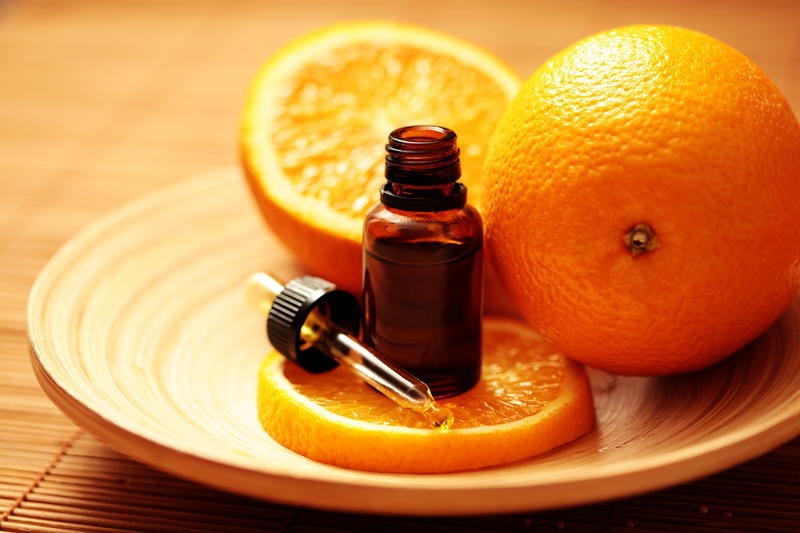A Grease-Free Zone: Unlock Simple Techniques for Cleaning Enamel Trays
Posted on 08/06/2025
A Grease-Free Zone: Unlock Simple Techniques for Cleaning Enamel Trays
Are you tired of stubborn grease clinging to your precious enamel trays? Enamel trays are beautiful, durable, and perfect for both kitchen use and decorative displays. But removing ingrained oils and baked-on stains can feel like a challenge, sometimes leaving your beloved trays looking less than their best. Don't worry! With the right strategies, maintaining a grease-free zone is entirely achievable.

Why Enamel Trays Need Special Care
Enamel trays, often crafted from metal with a fused powdered-glass coating, are both practical and attractive. However, their glossy finish, while resilient, is susceptible to permanent marks from neglectful cleaning. Enamelware is less porous than ceramics, meaning it doesn't absorb liquids, but oils and food debris can still bond tenaciously with the surface. If not cared for correctly, the finish can become compromised, leading to chips and dullness.
- Enamel is nonporous, which slows down bacteria growth -- but only if it's kept clean!
- Improper cleaning methods can scratch or dull the smooth glaze.
- Harsh chemicals or metal scouring pads can chip the enamel coating, reducing its lifespan.
Learning simple, effective cleaning techniques is the key to retaining an immaculate, grease-free shine. Let's dive into the best practices for cleaning enamel trays, from the everyday quick wipe to tackling built-up grease and tricky stains.
Gathering The Right Supplies for Cleaning Enamel Trays
Before you begin the cleaning process, prepare your workspace and assemble the correct items. The right supplies will safeguard the glossy surface while ensuring a thorough clean.
Recommended Cleaning Supplies:
- Soft sponge or microfiber cloth (non-abrasive is best)
- Dish soap, preferably grease-cutting and gentle on hands
- Warm or hot water
- Baking soda (for extra grease-fighting power)
- White vinegar (for stain removal and shine)
- Non-metallic scraper or old credit card (for stuck-on debris)
- Paper towels or clean dry cloths
- Optional: A plastic brush with soft bristles
The Basic Method: Everyday Cleaning of Enamel Trays
After daily use, especially with foods that carry oils, always clean your enamel trays promptly. This helps you maintain a grease-free surface and avoids a build-up that's tougher to remove later. Here's a step-by-step guide:
Step-by-Step Quick Cleaning Routine
-
Rinse Immediately After Use:
- Run your tray under warm water as soon as possible after use.
- This helps to loosen food residue and grease before it dries or hardens.
-
Apply Dish Soap:
- Use just a drop or two of a gentle, grease-cutting dish detergent.
- Gently lather with your non-abrasive sponge or cloth.
-
Scrub Gently:
- Carefully wipe the surface, focusing on greasy areas.
- Never use steel wool or metal-bristled brushes.
-
Rinse Thoroughly:
- Wash away the soap and loosened debris under warm running water.
-
Dry Completely:
- Use a soft towel or air-dry the tray on a dish rack.
This routine, performed after each use, prevents the build-up of oils, ensuring your enamel trays remain spotless, grease-free, and aesthetically pleasing.
Tackling Stubborn Grease: Deep Cleaning Techniques
Occasionally, you may encounter stubborn grease stains or baked-on residue from roasting, baking, or frying. These can seem impossible to remove, but don't fret! With some simple household items and a little patience, you can restore your enamel trays to their former glory.
Best Deep-Cleaning Method for Greasy Enamel Trays
-
Soak in Warm, Soapy Water:
- Fill your sink or tub with warm water and a generous squirt of dish soap.
- Let the enamel tray soak for 20-30 minutes, allowing the heat and soap to soften grease and residue.
-
Sprinkle Baking Soda:
- After soaking, drain the water and sprinkle a thick layer of baking soda over greasy or stained spots.
- Baking soda is a gentle yet effective abrasive and helps lift stuck-on grime.
-
Add a Splash of Vinegar:
- Pour a small amount of white vinegar over the baking soda. (Watch for bubbling!)
- The fizzing action helps dislodge tough stains and deodorizes the tray.
-
Scrub Gently:
- Use your soft sponge or plastic brush to scrub the affected areas in small circles.
- For persistent spots, allow the baking soda and vinegar mixture to sit for 10 minutes before scrubbing again.
-
Rinse and Dry:
- Rinse thoroughly with warm water, ensuring all residue is cleared.
- Dry completely to prevent water spots and preserve the glossy enamel finish.
Tips For Really Tough Grease or Burnt-On Marks
- If some grease patches remain, repeat the baking soda & vinegar method.
- Use a non-metallic scraper (like an old plastic card) to gently lift burnt bits without scratching the surface.
- Never leave a tray soaking for more than an hour: excessive moisture can damage edge trims or the layers beneath the enamel.
- For severe stains, make a paste of baking soda and water, spread it on the mark, and let it sit overnight before scrubbing and rinsing.
Specialized Techniques for Different Types of Stains
Grease isn't always the only problem when cleaning enamel trays. You might encounter tough stains from tomato sauce, burnt sugar, or even discoloration from regular use. Here's how to handle them:
Food Stains (Tomato, Curry, Sauces)
- After your regular cleaning, sprinkle baking soda over the stained area.
- Add vinegar or lemon juice for extra power.
- Let it fizz for 5-10 minutes, then scrub gently and rinse well.
Baked-On Sugar, Caramel, or Syrup
- Soak in hot, soapy water for up to 45 minutes.
- Carefully use a plastic scraper to loosen the burnt sugar.
- If needed, repeat the baking soda paste method overnight for stubborn spots.
Discoloration or Dullness
- Polish with a soft cloth and a white vinegar-and-water solution.
- For ongoing dullness, use a non-abrasive enamel polish, available at most kitchenware shops.
Note: If stains persist, avoid harsh chemicals like bleach or ammonia, as they can damage the enamel surface.
The Don'ts: Mistakes to Avoid When Cleaning Enamel Trays
Enamel trays can last generations with the right care, but several cleaning mistakes can damage their beautiful finish irreparably. Always follow these crucial guidelines:
- Do not use metal scouring pads or steel wool -- these will scratch and chip the enamel.
- Do not use harsh or acidic chemicals (like oven cleaners, ammonia, or industrial bleach).
- Never place hot enamel trays directly into cold water -- rapid temperature changes can cause cracking or "crazing" of the surface.
- Do not soak for extended periods, especially trays with painted or decorative edges.
- Always dry thoroughly -- standing water can lead to rust on exposed metal edges or under chipped areas.
Extending the Life and Shine of Your Enamel Trays
Once your enamel trays are clean and grease-free, taking a few preventive measures will help keep them that way. Protecting the enamel finish is as important as cleaning it.
Preventative Care Tips
- Line trays with parchment paper or silicone baking mats before roasting oily foods
- Avoid using sharp knives or utensils directly on the tray
- Store them carefully, avoiding direct contact with other metal kitchenware
- Hand-wash rather than relying on the dishwasher, which can be too abrasive over time
- Inspect for chips or cracks regularly, addressing any issues immediately to avoid rust
- Polish occasionally with a little olive oil wiped over the surface, then buffed off with a soft cloth for a radiant shine

FAQ: Common Questions About Cleaning Enamel Trays
Can I use my dishwasher to clean enamel trays?
Generally, hand washing is safer. Dishwashers can cause chipping over time, especially if trays bump into each other or other dishes. If you do use a dishwasher, use gentle cycles and avoid high heat.
How can I remove tough burnt spots without scratching?
Use soaking, baking soda, and vinegar first. For the toughest spots, apply a baking soda paste overnight, then scrape carefully with a plastic card or non-abrasive pad.
What if my enamel tray is chipped? Can I still use it?
If only the outer edges are chipped (not in contact with food), you may continue use, but dry thoroughly to prevent rusting. If the enamel coating on the food-contact surface is broken, consider retiring the tray from food use to avoid potential contamination.
Is enamelware really nonstick?
Enamelware is smoother and less porous than uncoated metal but is not truly nonstick. Food--especially cheese and sugary sauces--can still adhere if not cleaned promptly.
Can I use baking soda and vinegar on all enamel surfaces?
Yes, but always check manufacturer instructions for your specific enamel product. Avoid abrasive scrubbing on hand-painted designs or metallic trim; focus abrasive methods on the plain enamel areas.
Conclusion: Achieve a Grease-Free Zone Every Time!
With these simple, effective, and safe techniques, cleaning enamel trays becomes a straightforward task rather than a dreaded chore. By avoiding harsh chemicals and abrasive tools, you'll enjoy your enamel trays for years--always ready, grease-free, and gleaming for their next use.
Remember, the key to maintaining a grease-free zone with enamelware is frequent, gentle cleaning, a handful of pantry staples, and a little patience. Try these simple techniques and reclaim your trays' original sparkle--no elbow grease required!




